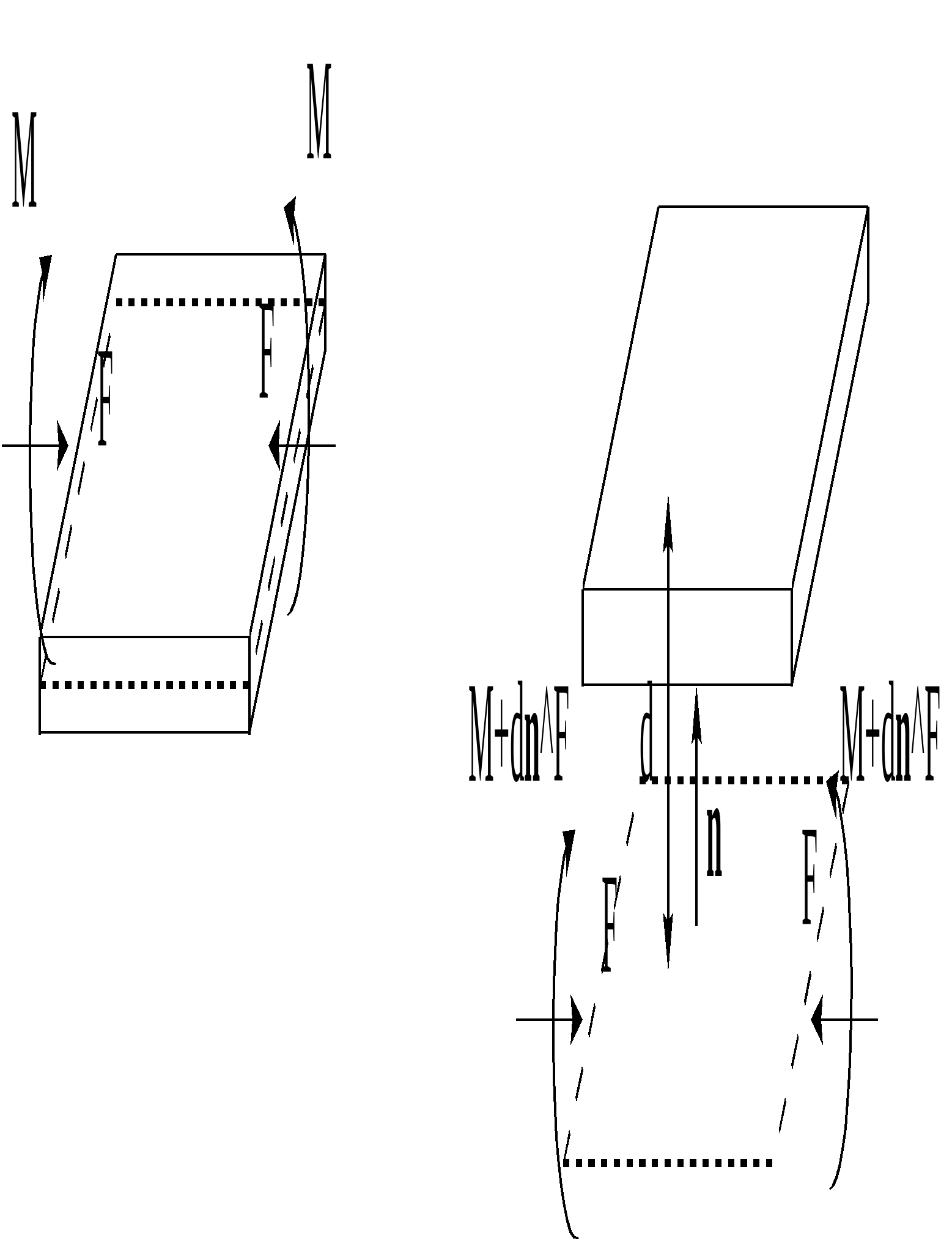6. Static and modal validation#
6.1. Initial validation#
The first part of the validation consists in testing a simple plate subjected to forces and torques and whose mesh plane does not coincide with the plane of the mean sheet on which the forces are applied. For the plate subjected to forces and torques, the results with and without eccentricity should take into account the change in coordinate system for the torques as shown below.

The movements are linked in the following way for a point located at a height z with respect to the middle sheet:
\(u\mathrm{=}{u}_{\text{moy}}+{\theta }_{\text{moy}}\mathrm{\wedge }\mathit{zn}\mathrm{=}{u}_{\text{ref}}+{\theta }_{\text{ref}}\mathrm{\wedge }(z+d)n\)
What is still written:
\(\begin{array}{c}{\theta }_{\text{moy}}\mathrm{=}{\theta }_{\text{ref}}\\ {u}_{\text{moy}}\mathrm{=}{u}_{\text{ref}}+{\theta }_{\text{ref}}\mathrm{\wedge }\mathit{dn}\end{array}\)
This allows us to establish the transition relationships between movements in relation to the mean sheet and those in relation to the reference plane.
For generalized efforts, in the two preceding cases, the same results are obtained on the middle, lower and upper sheets of the plate.
6.2. Test case SSLS111: eccentricity for simple plates#
It is a flexural calculation of a bilayer made of two different isotropic materials. Membrane-flexure coupling is studied. The reference calculation is that of a bilayer defined by DEFI_COMPOSITE composed of the two different isotropic materials (non-symmetry according to \(z\)). The other modeling is composed of two plates that are eccentric with respect to the average fiber of the plate used with DEFI_COMPOSITE. The results, which are identical from one model to another, are given in terms of generalized movements and efforts. In addition, a modal analysis is carried out on the geometry of this test for both models: the natural frequencies found are identical.
6.3. Test case SSLS112: eccentricity for composite plates#
It is a flexural calculation of a quadricayer presenting a material non-symmetry with respect to its mean plane. The reference calculation uses a quadricayer defined by DEFI_COMPOSITE. The other modeling uses two bilayers defined by DEFI_COMPOSITE but offset from the average fiber of the quadricayer. The results, which are identical from one model to another, are given in terms of movements.